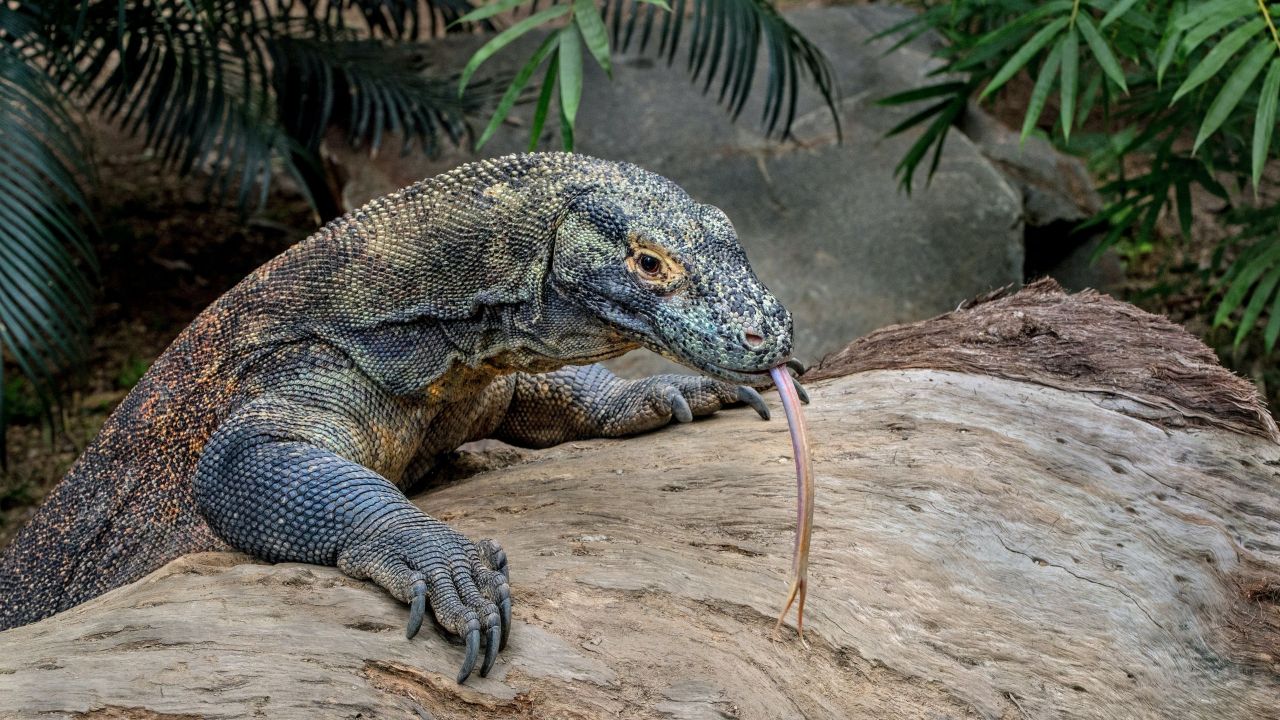
Komodo dragon (Varanus komodoensis): the largest living lizard in the world.
Kingdom: | Animalia
Phylum: | Chordata
Class: | Reptilia
Order: | Squamata
Family: | Varanidae
Genus: | Varanus
Species: | komodoensis
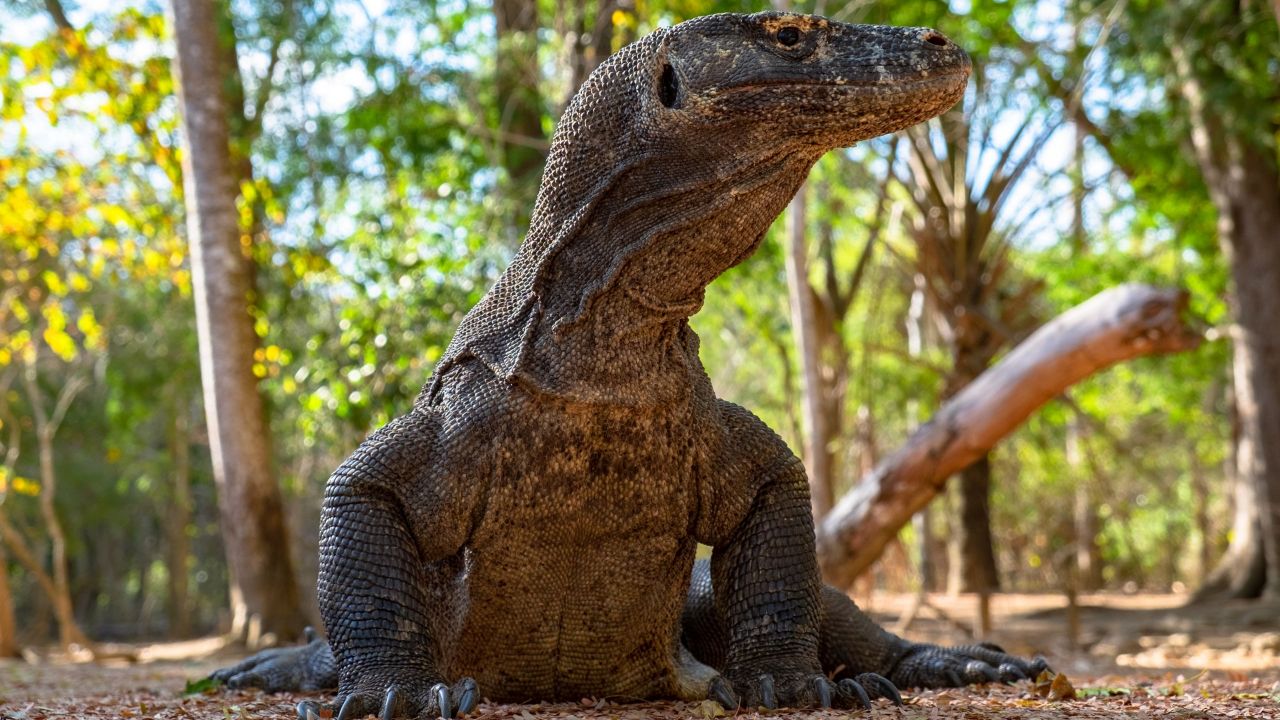
Size and Weight:
Komodo dragons are the largest living lizard in the world, of over 3,000 lizard species. Females measure up to 6 feet in length and males measure up to 10 feet in length. Females can weigh up to 155 pounds and males can weigh up to 300 pounds.
Appearance:
In the early 1900s, before the discovery of these lizards by western scientists, rumors existed of a gigantic dragon-like lizard in the Lesser Sunda Islands. These rumors contributed to their common name. They also have a long, yellow, forked tail, similar to that of mythical dragons. Depending on their location, their coloring ranges from black to yellow-gray. They have rough, durable skin reinforced with osteoderms, or bony plates, protecting them from injuries. These lizards have a large, muscular tail and long, powerful claws.
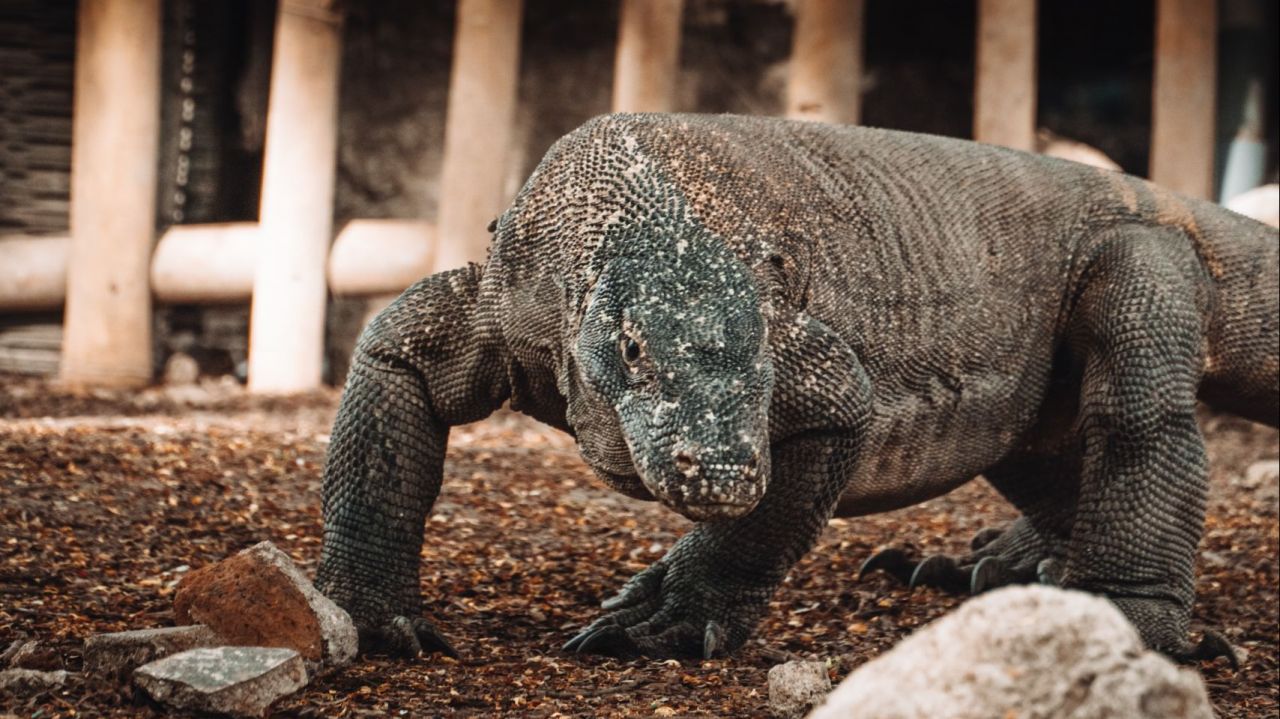
Diet:
Adult Komodo dragons eat almost any type of meat that is available to them. Its natural prey is the Timor deer, but their diet also includes anything from small rodents to large water buffalo. They stalk their prey and then attack using their long claws and sharp teeth. Their saliva also contains potentially harmful bacteria, which is believed to help weaken prey that is too large for a single dragon to overpower. If their prey escapes, they can use their long tongues to find them even up to a mile away. Young feed primarily on small lizards and insects, as well as snakes and birds.
Habitat:
Their home islands are volcanic, so they are rugged and hilly. The islands are covered with both forest and savanna grassland. The climate on these islands is hot with daytime temperatures during the dry season reaching 95 degrees Fahrenheit with 70 percent humidity. In comparison to other large predators, Komodo dragons have the smallest home range.
Geography:
Komodo dragons are endemic to only five islands in southeastern Indonesia. They can be found on Indonesia’s four islands within Komodo National Park: Komodo, Rinca, Gili Montang, Gili Dasami. They can also be found on the island of Flores.
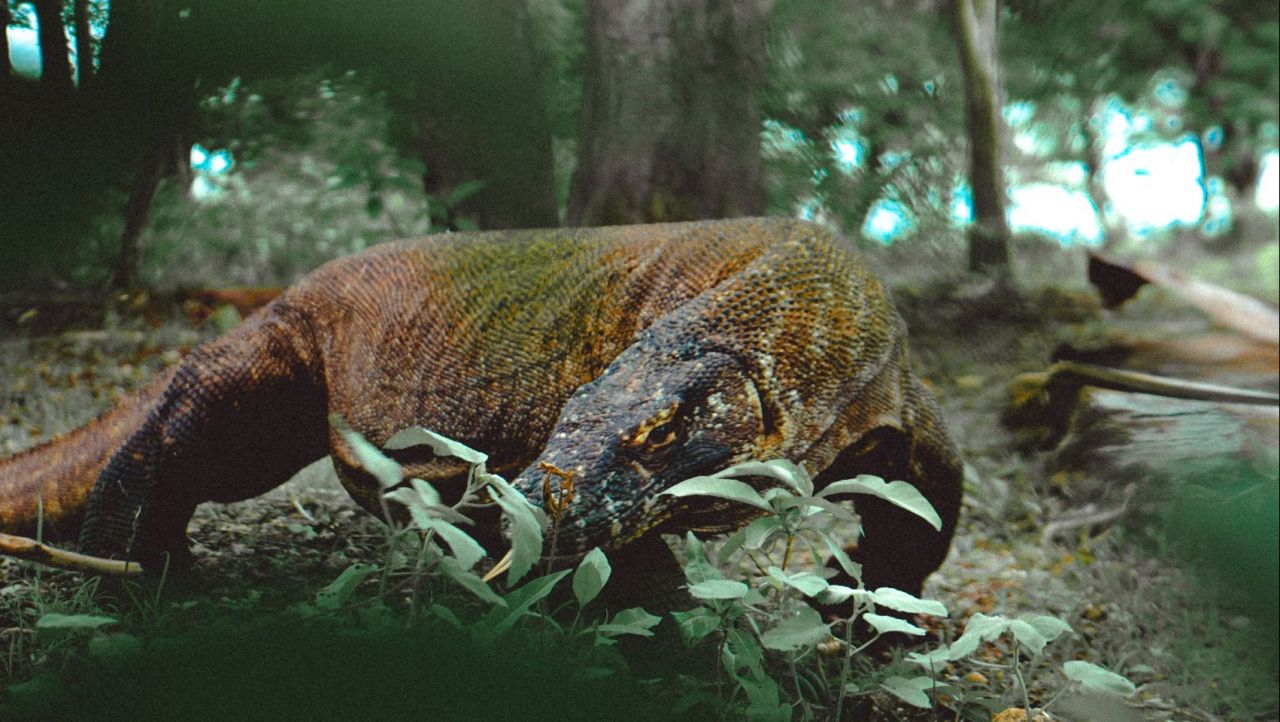
Breeding:
Female Komodo dragons do not breed every year that they are fertile. They take time off to recover from the energy costs of egg production. Females use three different nest types for their eggs including hillside nests, ground nests, and mound nests built by the orange-footed scrub fowl. They will often dig decoy nest chambers as a way of discouraging predators like male Komodos and other female dragons from stealing their eggs.
A female lays between 15 to 30 eggs at a time, which are about the size of a grapefruit. She guards her nest and eggs for the first few months. The incubation period ranges from two to eight months. When they hatch, the newborns are only about 12 inches long and incredibly vulnerable. To stay safe from predators, they need to hurry from their nest to the closest tree so the adults won’t eat it. Adults are too heavy and uncoordinated to climb trees.
While living in trees, the youngsters feed on eggs, grasshoppers, beetles, and geckos. The Tokay gecko is their food of choice. They are large enough to come to the ground when they are about 4 years old and 4 feet long. They reach sexual maturity when they are 5 to 7 years old.
Social Structure:
The Komodo dragon is a solitary creature that lives in hunts alone. Some dragons build or find shallow burrows to keep warm at night, to rest, and to escape the heat during the daytime. These burrows are typically found along the slopes of dry streambeds among tree roots.
A mature dragon leads a leisurely life. The dragon begins its day by emerging from its burrow to look for a sunny spot to warm up in. Once heated up, the dragon searches for its first meal, which is followed by a nice long nap in the shade during the hottest part of the day. Next, the dragon searches for its afternoon meal, which is followed by bedtime.
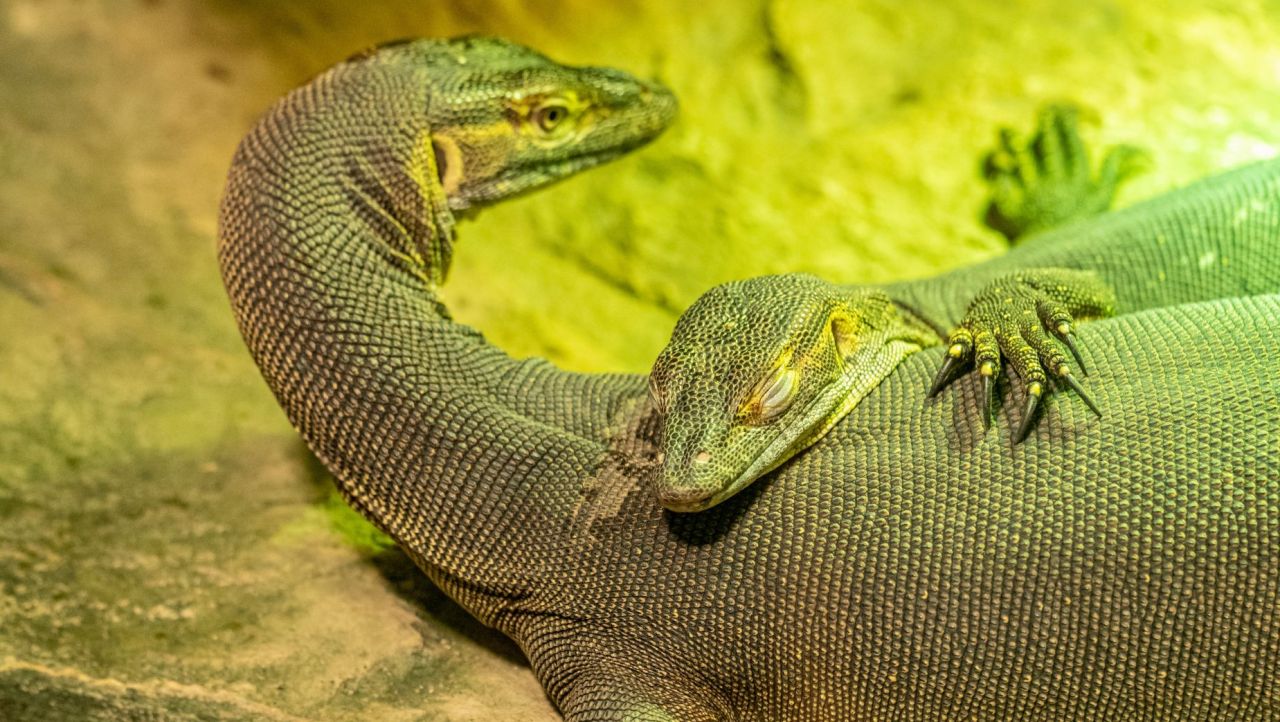
Lifespan:
Komodo dragons live about 30 years in the wild.
Threats:
Komodo dragons have long been hunted both legally and illegally. However, the largest threat to their population decline is habitat loss and their limited range. Since the 1970s, Komodo dragons have not been found on the island of Padar, due to the poaching of Timor deer, the dragon’s primary food source. Climate change is another major threat to the species as sea level rise and heat waves threaten their habitat.
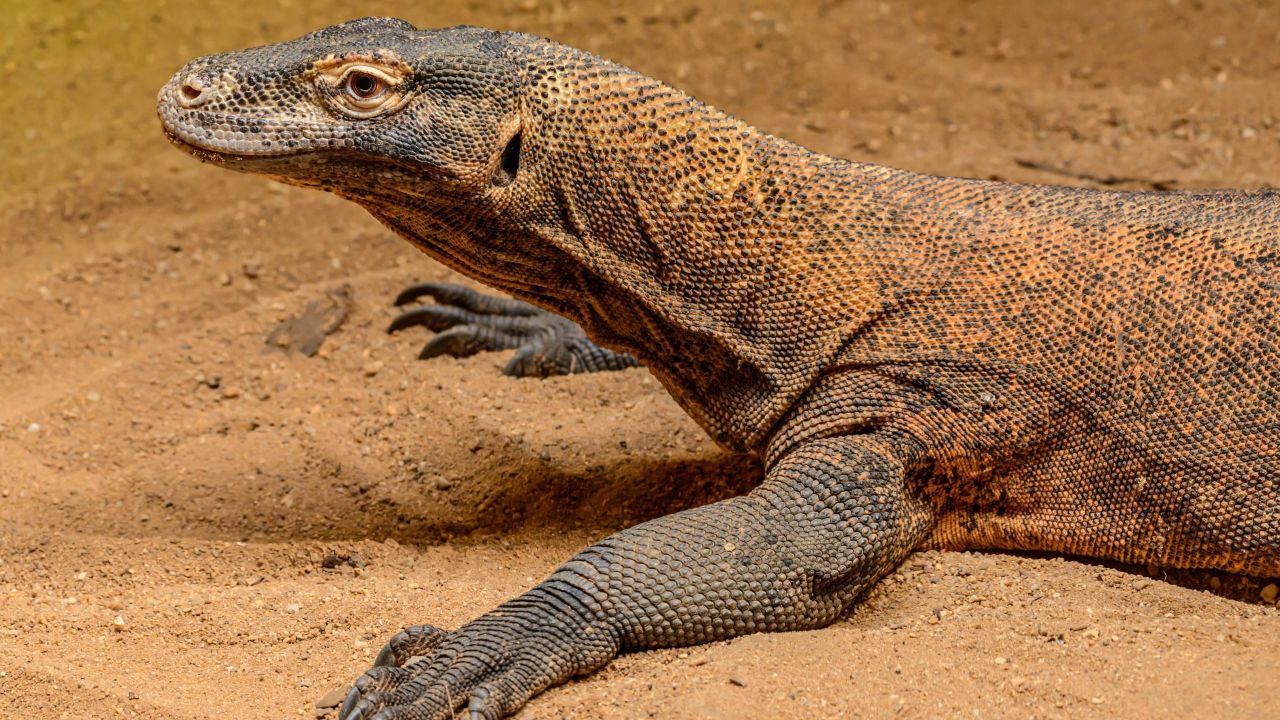
Conservation Status:
Komodo dragons are listed as Endangered by the IUCN’s Red List. There are estimated to be nearly 1,400 adults in the wild and their populations are considered stable.
Conservation Efforts:
Most wild Komodo dragons live in the Komodo National Park, which was established in 1980. While illegal activity still takes place, strict anti-poaching laws exist to protect the dragon in this area. The Dutch colonial government instituted protection plans as early as 1915. These dragons promote tourism and provide economic incentives for local people to support the Komodo dragon’s protection. Numerous conservation groups and zoos are working to protect these species through research and education.
Source: The San Diego Zoo Wildlife Alliance and Smithsonian’s National Zoo and Conservation Biology Institute.
